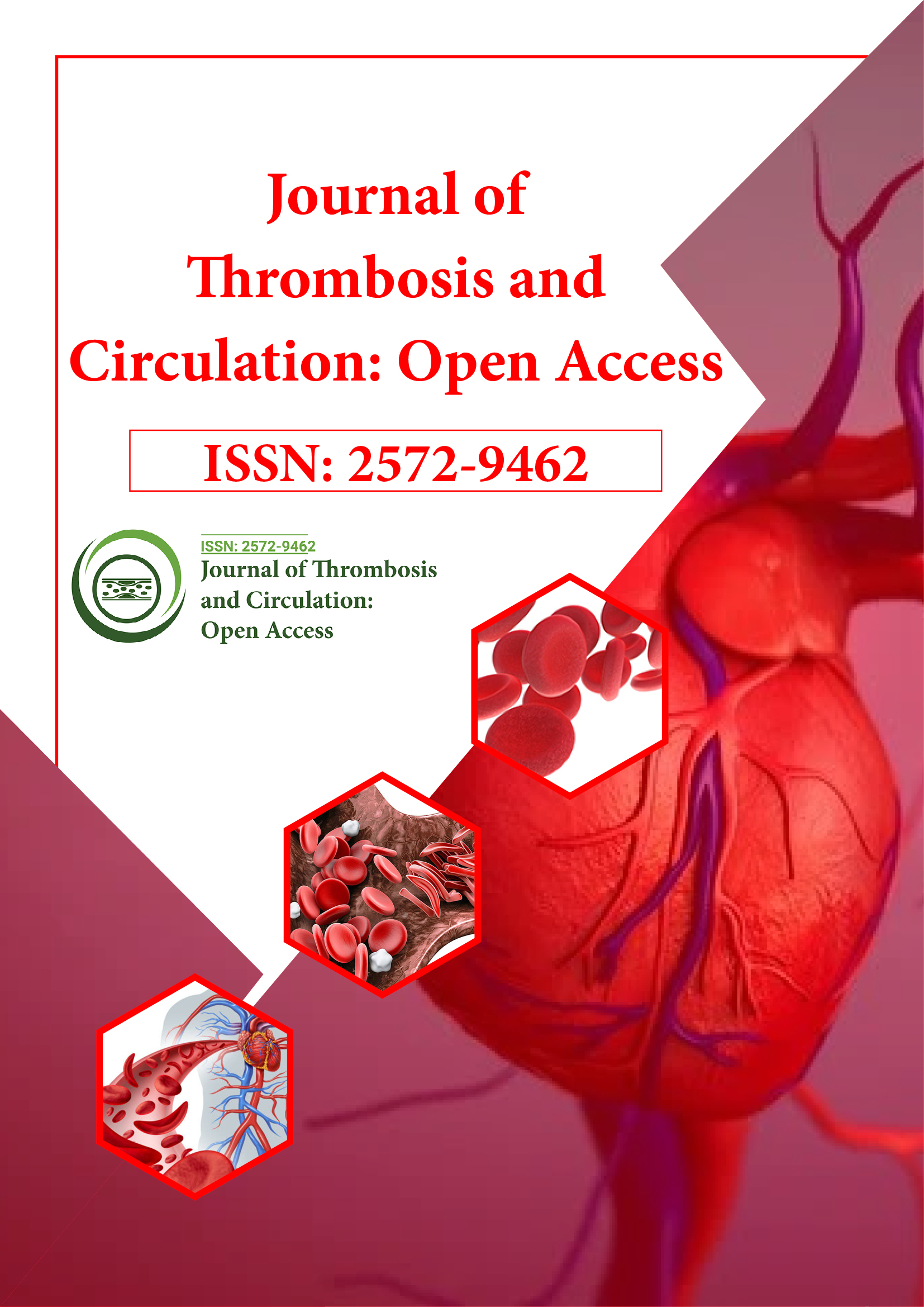Indexed In
- RefSeek
- Hamdard University
- EBSCO A-Z
- Publons
- Google Scholar
Useful Links
Share This Page
Journal Flyer

Open Access Journals
- Agri and Aquaculture
- Biochemistry
- Bioinformatics & Systems Biology
- Business & Management
- Chemistry
- Clinical Sciences
- Engineering
- Food & Nutrition
- General Science
- Genetics & Molecular Biology
- Immunology & Microbiology
- Medical Sciences
- Neuroscience & Psychology
- Nursing & Health Care
- Pharmaceutical Sciences
Perspective - (2021) Volume 7, Issue 6
Differential Impact of Statin use on Coagulation Markers: A Functioning near Investigation in the NEO Review
Jaya Kiran*Received: 03-Nov-2021 Published: 24-Nov-2021
Introduction
Statins are a likely treatment for venous thromboembolism (VTE) prophylaxis correlative to regular anticoagulants without related draining inconveniences. This review meant to think about supportive of thrombotic exercises of various classes of lipidbringing down drugs in a functioning comparator plan and decide if there is a connection between statin versus fibrate/niacin use and favorable to coagulant factor results.
Venous thromboembolism (VTE) has an expected yearly rate pace of 12 for every 1000 man a very long time among individuals of European family [1]. The 3-hydroxy-3-methylglutaryl-coenzyme A (HMG-CoA) reductase inhibitors, the alleged statins, are a class of lipid-bringing drugs generally utilized down to forestall blood vessel atherosclerotic illness. A developing assemblage of proof demonstrates that statins are a promising treatment for VTE prophylaxis integral to anticoagulants without related draining entanglements. Statins have mitigating and against oxidant properties other than their lipid-bringing down impacts [1]. Also, it has been hypothesized by predominantly in-vitro studies and observational investigations that they might effectsly affect the vessel divider and hostile to thrombotic properties. These incorporate diminished tissue factor articulation and thrombin age, hindrance of favorable to coagulant responses catalyzed by thrombin including fibrinogen cleavage and component (F) V and FXIII initiation, decrease of FVII and FVIII action, upgraded endothelial thrombomodulin articulation, and upregulation of fibrinolytic movement showed by diminished plasminogen activator inhibitor (PAI)- 1 and expanded tissue plasminogen activator (tPA) articulation. A randomized preliminary as of late showed that multi month of treatment with rosuvastatin 20mg/day prompts a further developed coagulation profile, most strikingly diminished FVIII, in patients with earlier VTE contrasted with non-statin clients. Considering that the impacts of medications are not really class impacts, the decrease of supportive of coagulant factors by rosuvastatin may not be summed up to different statins presently available. It is realized that various sorts of statins show diverse decreasing impacts on low-thickness lipoprotein, atherosclerosis, and irritation [2].
Statistical analysis
The members general qualities were accounted for as means (standard deviation) or numbers (with rates). As niacin/fibrates are not related with hostile to thrombotic properties, members who utilized this class of medications were viewed as the reference bunch. The mean of coagulation factors in members utilizing any statins were contrasted and the reference bunch utilizing straight relapse and revealed as mean distinction. The impact size was displayed with 95% certainty stretches (CI) [3].
One supposition that will be that there is no inclination in endorsing a lipid-bringing drug down to a particular patient and that the clinical attributes ought to be appropriated uniformly over the members. Considering that this supposition may be excessively solid, we included age, sex, tobacco smoking, BMI, hypertension, diabetes, and common cardiovascular infection (myocardial dead tissue, angina pectoris, congestive cardiovascular breakdown) as possible perplexing elements to the relapse investigations. All measurable examinations were registered in SPSS rendition 22.0 [4].
Conclusion
Current statin use is related with lower plasma levels of FXI. The kind of statin might matter, however it needs additionally randomized control preliminaries with a lot bigger example sizes. Accordingly, it appears to be that statins are more intense medications than fibrates in bringing down LDL-cholesterol, decreasing the danger of atherosclerosis, and lessening coagulation factors, which may at last prompt a lower hazard of first or intermittent VTE.
REFERENCES
- Heit JA, Spencer FA, White RH. The epidemiology of venous thromboembolism. J Thromb Thrombolysis. 2016;41(1):3–14.
- Pastori D, Farcomeni A, Milanese A, Del Sole F, Menichelli D, Hiatt WR, et al. Statins and major adverse limb events in patients with peripheral artery disease: a systematic review and meta-analysis. Thromb Haemost. 2020; 120(5):866–785.
- Kunutsor SK, Seidu S, Khunti K. Statins and secondary prevention of venous thromboembolism: pooled analysis of published observational cohort studies. Eur Heart J. 2017; 38(20):1608–1612.
- Li L, Zhang P, Tian JH, Yang K. Statins for primary prevention of venous thromboembolism. Cochrane Database Syst Rev. 2014;12.
Citation: Kiran J (2021) Differential impact of statin use on coagulation markers: a functioning near investigation in the NEO review. J Thrombo Cir 7: 174
Copyright: © 2021 Kiran J. This is an open-access article distributed under the terms of the Creative Commons Attribution License, which permits unrestricted use, distribution, and reproduction in any medium, provided the original author and source are credited.
